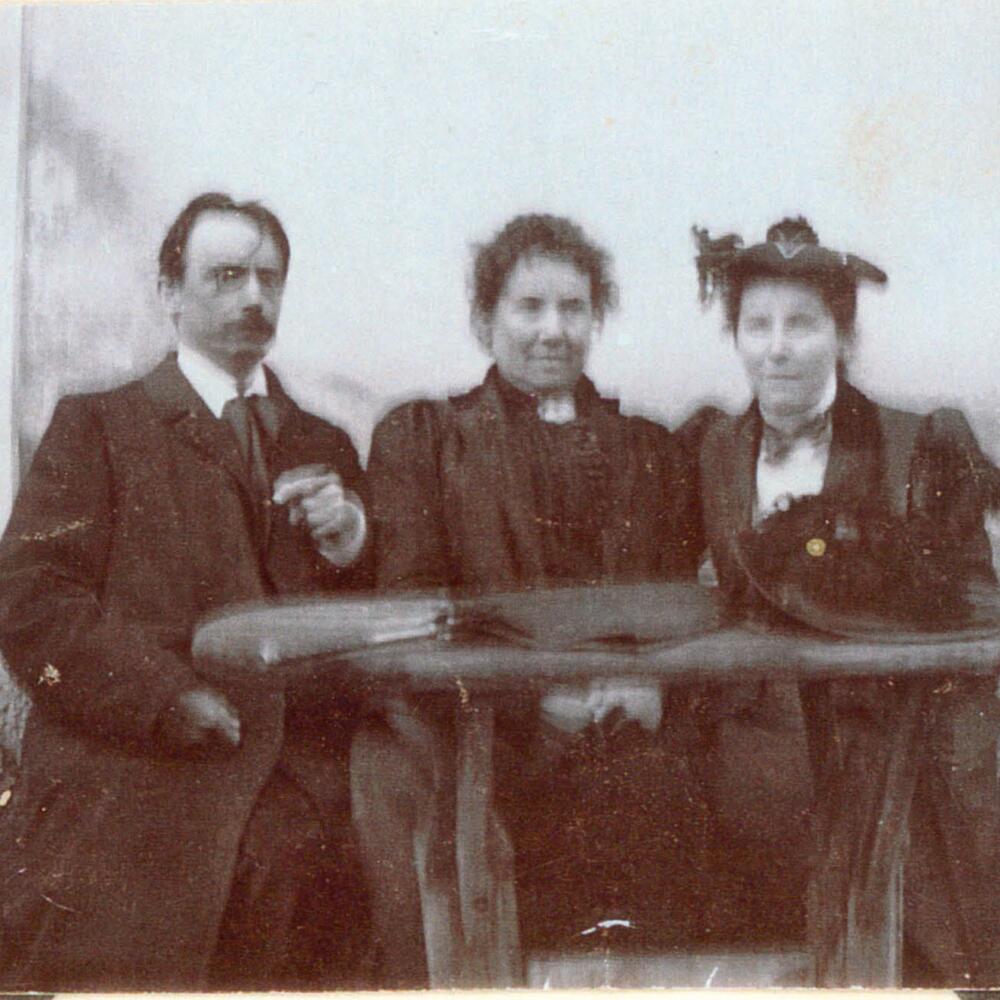Getting Closer in Becoming
When anthroposophists hear the name Rudolf Steiner, they probably think of his works and deeds. Non-anthroposophists (in the more amiable cases) think of an unusual man from the beginning of the 20th century who brought concepts of a not-wholly-understandable worldview into something real. In what other ways can we meet him? How might we develop a new closeness to him? A conversation with Martina Maria Sam, who is particularly familiar with the small and often little-known facts of Rudolf Steiner’s life. Questions by Gilda Bartel.
You’ve done an extensive study of Rudolf Steiner as a person. It must have brought you into a special relationship with him. What is that like?
I’ve really grown closer to Rudolf Steiner as a person, as someone in a process of becoming—someone who was always developing throughout his life. By immersing myself in his biography, I’ve also come to understand my own personal development in a new way. This was most noticeable when I studied his childhood and early youth. Now it’s becoming increasingly clear to me how often the examples he gives in his lectures are autobiographical, how they come from his own experiences.
So, you may have discovered where Rudolf Steiner experienced self-doubt, for example?
I don’t know if we can say that he experienced self-doubt. But he did have a crisis in his mid-thirties. On the one hand, he wasn’t entirely sure where his career would go. On the other hand, it was only during this period that he finally realized very clearly that he did not perceive the world the same as other people did and that the sensory world offers something unique that only it can provide. He had his first occult experience around his eighth birthday: he perceived his aunt spiritually just after she had taken her own life. Ever since that experience, he had the ability to see the essence of things beyond the surface of the senses. He once said in a lecture that at an earlier stage of human history, people viewed concepts as entities, as beings. I imagine he experienced something similar: that he looked at a red rose, for example, but didn’t pay attention to the color of the rose, its shape, its petals and sepals. He perceived the plant being, the plant’s essence, as it worked directly in the plant, not so much the rose’s wonderful red color, for example. Not until he was in his thirties did he clearly see that he was missing something. He said that other people looked at a rose three or four times and were then able to describe it. But he had to look at it thirty or forty times in order to memorize the sensory details.
How can we imagine this process?
I imagine it like this: if I wanted to find out something about you, for example, then with this kind of perception, I wouldn’t have to look at you or observe you closely; instead, I would immediately experience the Gilda-essence within me. And then I wouldn’t have to look closely at how you look, speak, move, etc.—how the essence is expressed in the outer world. This is fascinating because Rudolf Steiner brought a lot of attention to Goethe, the man of the senses, the great observer. Goethe would have looked very intently at how Gilda appears in her individual expressions, and through his precise observation, he would learn something about your inner essence and being. For Rudolf Steiner, this vision of the essence was simply given immediately. However, he greatly admired Goethe’s approach, and at 35, he began to gradually develop this ability of exact sensorial observation. I could now imagine that his occasional heavy drinking in Berlin in 1897/98 suppressed his given spiritual ability—the kind of clairvoyance that had been bestowed upon him since childhood by grace—so that he could “work” his way back into the spiritual world in a new and even deeper way. Through various experiences and also through his journey through the sensory world, at the turn of the century, Rudolf Steiner entered a deeper layer of the spiritual world than before. I think that it was only then that he really made Goethe’s method fruitful for himself. I believe he prescribed for himself the practices that he gave later in his lectures on the “Practical Training of Thinking.” These include, for example, looking at the sky at the same time every day without immediately forming an opinion about it, simply perceiving what is there with your senses. He trained himself in this ability of pure observation during those years.
This text is an excerpt from an article published in the (online exclusive) Goetheanum Weekly. You can read the full article on the website. If you are not yet a subscriber, you can get to know the Goetheanum Weekly for 1 CHF./€.
Translation Joshua Kelberman
Image Rudolf Steiner with Anna and Minnie Eunike, ca. 1900 in Berlin. © Rudolf Steiner Archive, Dornach.

